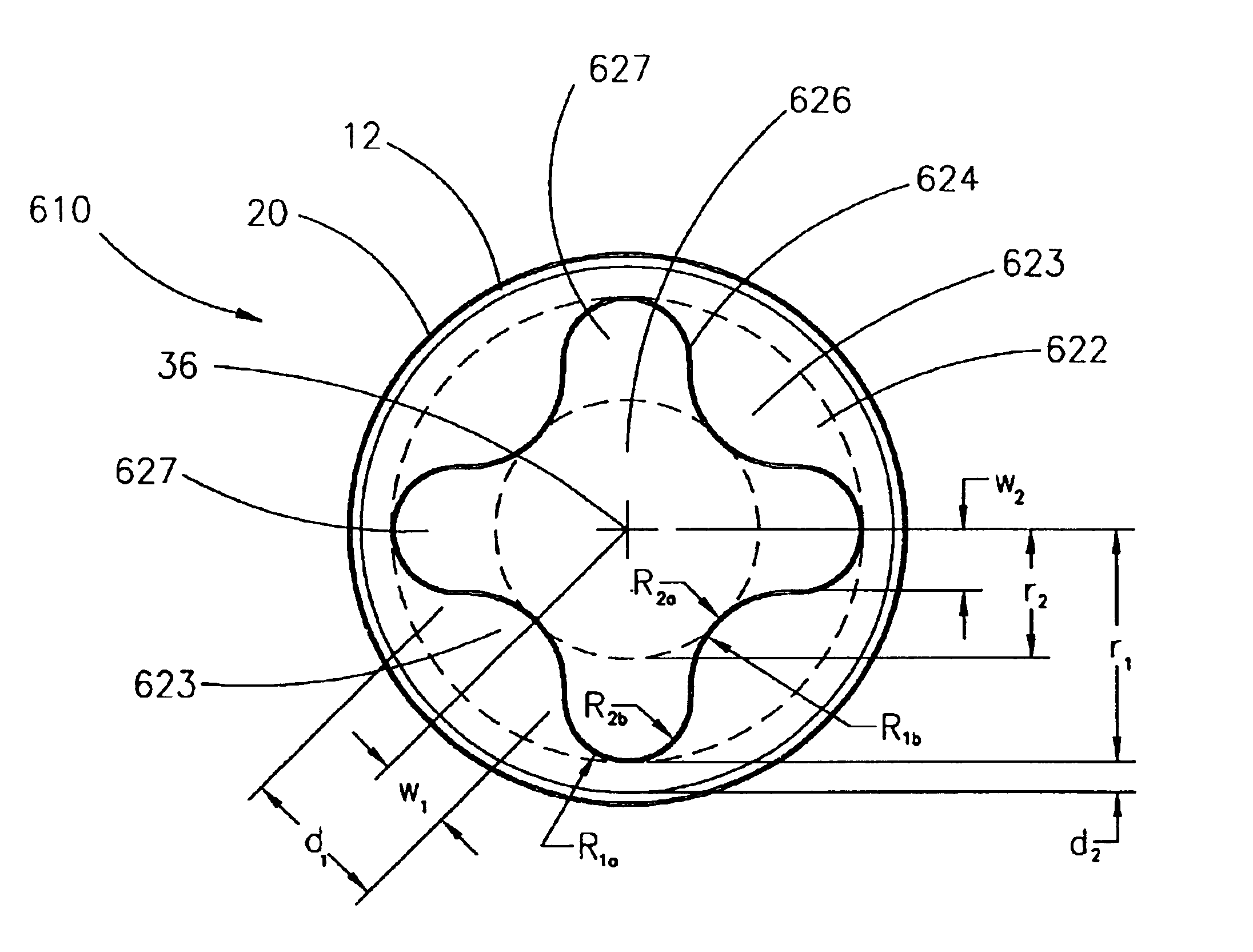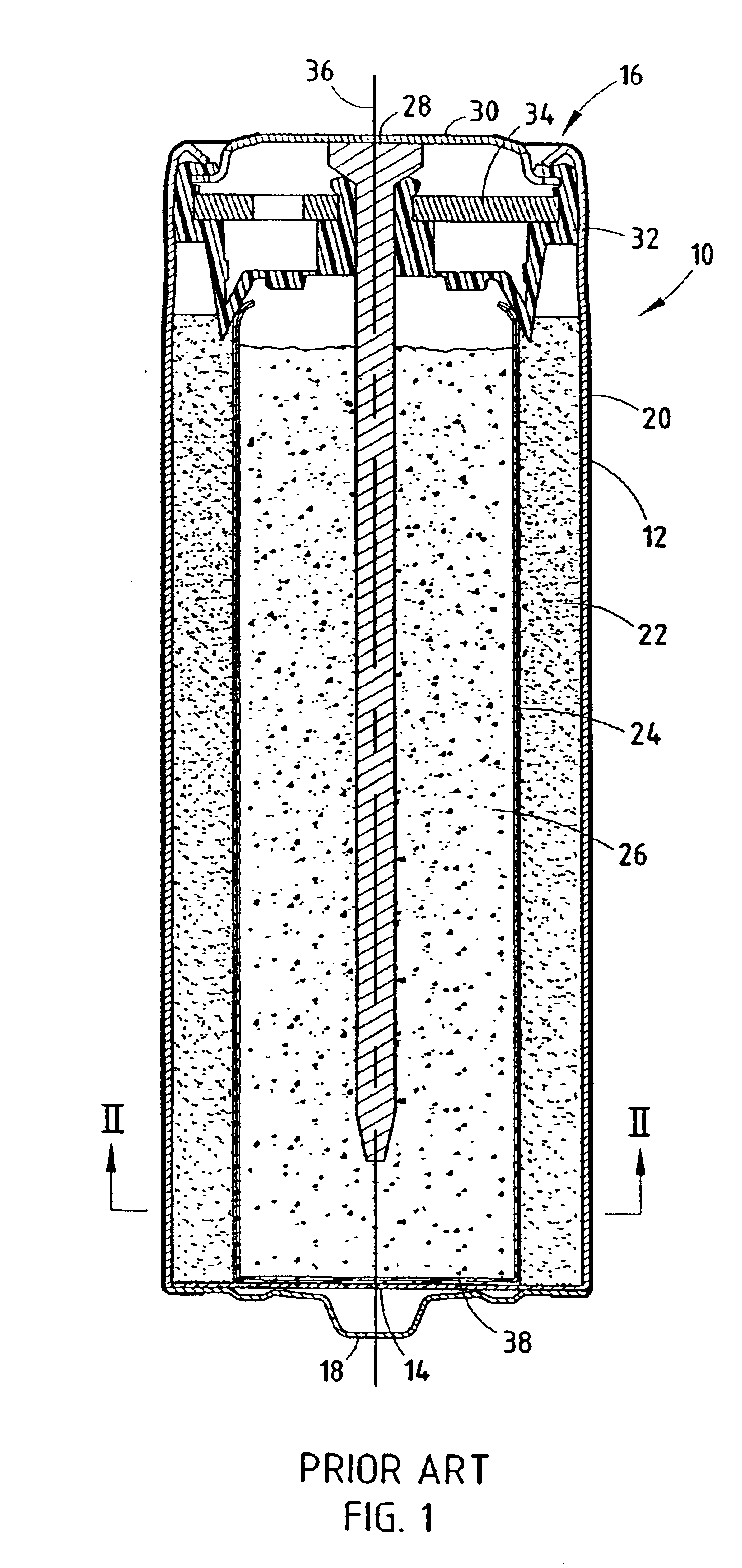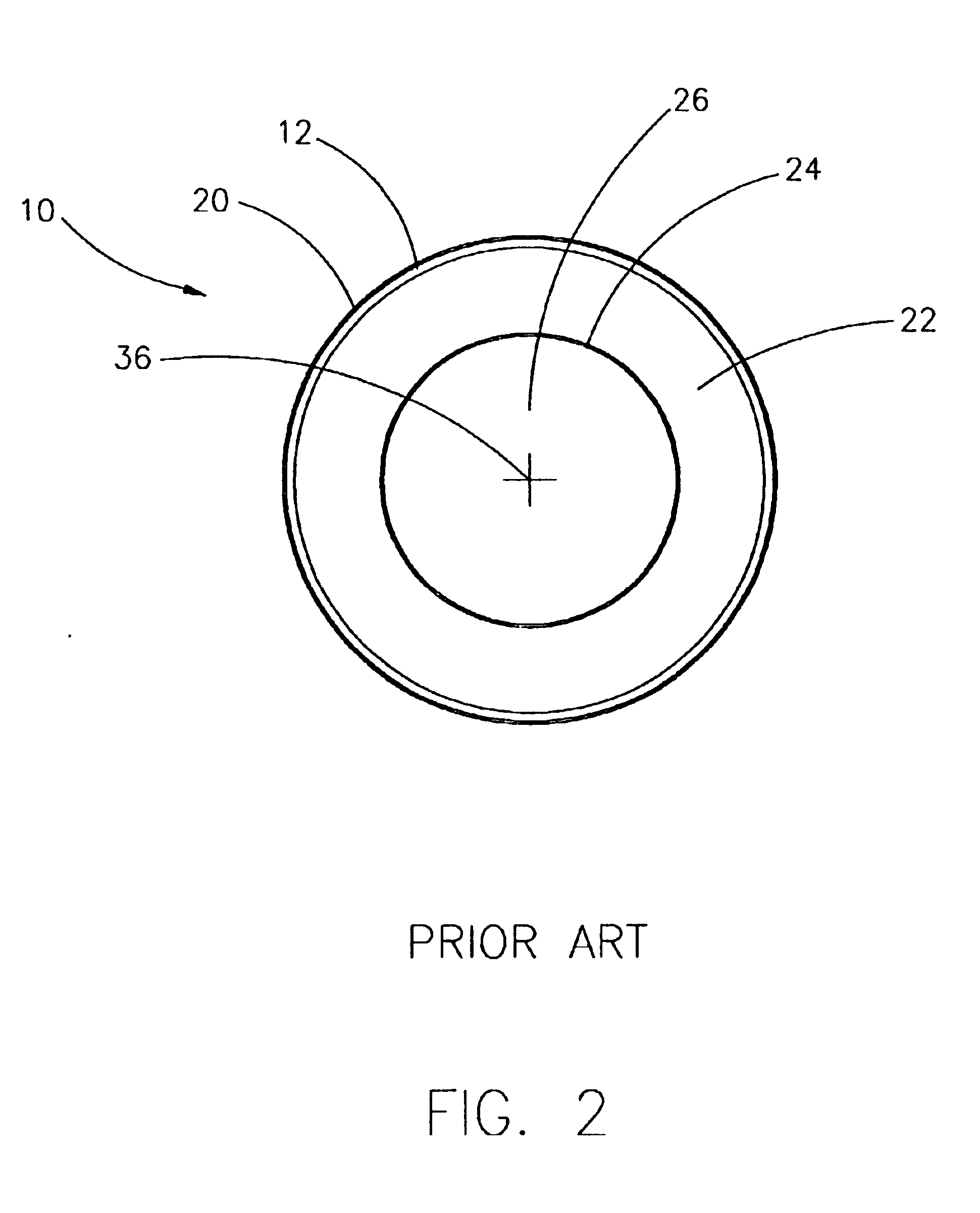Battery with high electrode interfacial surface area
a technology of interfacial surface area and electrodes, which is applied in the direction of cell components, cell component details, electrochemical generators, etc., can solve the problems of reduced fraction (the discharge efficiency), reduced active materials and theoretical discharge capacity, and difficulty in achieving high battery capacity and long discharge life. achieve high electrode interfacial surface area, increase cell internal resistance, and high speed
- Summary
- Abstract
- Description
- Claims
- Application Information
AI Technical Summary
Benefits of technology
Problems solved by technology
Method used
Image
Examples
example 2
Cells were made in the manner described in Example 1, except for the following. The cross-sectional shape of the cathode corresponded to that of cell 210 in FIG. 4. Table 1 summarizes key dimensions and dimensional relationships (cell 210). Because of the increased electrode interfacial surface area compared to Example 1, more separator was needed. The cut separator was 3.07 inches (77.97 mm) long×2.165 inches (54.99 mm) high, and the amount of electrolyte added after separator insertion was increased to 1.29 g.
example 3
Cells were made in the manner described in Example 2, except for the following. The cross-sectional shape of the cathode corresponded to that of cell 310 in FIG. 5, and the electrode dimensions were those shown for cell 310 in Table 1. The cut separators were 3.07 inches (77.97 mm) long×2.165 inches (54.99 mm) high, and the amount of electrolyte added after separator insertion was 1.29 g.
example 4
Cells were made in the manner described in Example 2, except for the following. The cross-sectional shape of the cathode corresponded to that of cell 710 in FIG. 9, and the electrode dimensions were those shown for cell 710 in Table 1. The cut separators were 3.07 inches (77.97 mm) long×2.165 inches (54.99 mm) high, and the amount of electrolyte added after separator insertion was 1.29 g.
PUM
 Login to View More
Login to View More Abstract
Description
Claims
Application Information
 Login to View More
Login to View More - R&D
- Intellectual Property
- Life Sciences
- Materials
- Tech Scout
- Unparalleled Data Quality
- Higher Quality Content
- 60% Fewer Hallucinations
Browse by: Latest US Patents, China's latest patents, Technical Efficacy Thesaurus, Application Domain, Technology Topic, Popular Technical Reports.
© 2025 PatSnap. All rights reserved.Legal|Privacy policy|Modern Slavery Act Transparency Statement|Sitemap|About US| Contact US: help@patsnap.com



